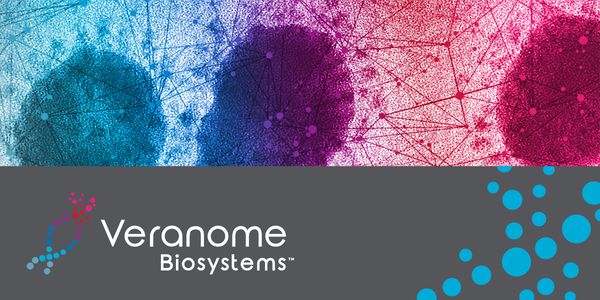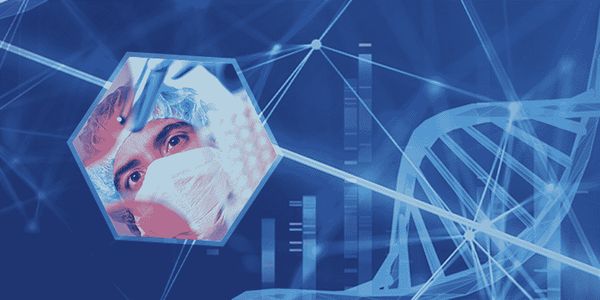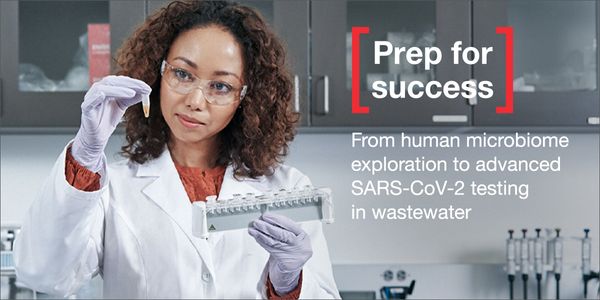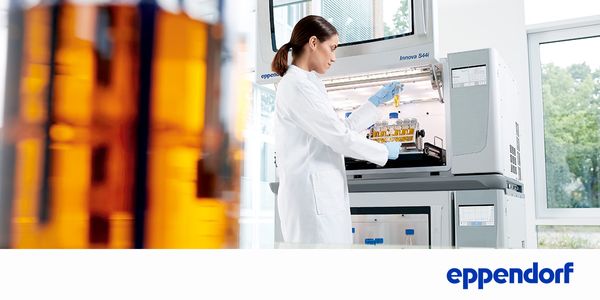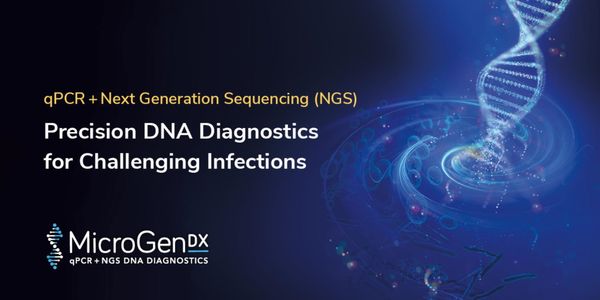Microbiome and diseases
The microbiome describes the microbes (such as bacteria, fungi, viruses) that live in and on our bodies. The distribution and presence of microbes can have a significant impact on health and disease. Further, alterations in the microbiome can impact how a patient will respond to treatments prescribed for diseases.
-
SEP 09, 2021 | 12:00 AMEarly detection is critical for prompt and effective treatment of acute infectious diseases. For tick-borne diseases (TBD), the lack of accurate early diagnosis can result in delayed treatme...SEP 09, 2021 | 12:00 AMMicrobiome sequencing data are known to be biased; the measured taxa relative abundances can be systematically distorted from their true values at every step in the experimental/analysis wor...SEP 08, 2021 | 10:30 AMVaricella zoster virus (VZV) causes two clinically distinct forms of disease, varicella and herpes zoster. These forms can each present with multiple manifestations ranging from lesions incl...Speaker: Jon Armstrong, MScSEP 08, 2021 | 7:30 AMMicrobes are recently recognized as driving the energy and nutrient transformations that fuel Earth’s ecosystems in soils, oceans and humans. Where studied, viruses appear to modulate...SEP 08, 2021 | 12:00 AMThe gut microbiota has been proposed to affect the risk and prognosis of various health outcomes. Related to pregnancy, existing studies suggest that pregnant women have a distinct microbiot...SEP 08, 2021 | 12:00 AMThe Human Microbiome Project was conceived almost 15 years ago, as an extension of the Human Genome Project, to explore the diversity of human-associated microorganisms at multiple body site...JUL 15, 2021 | 9:00 AMDate: July 15, 2021 Time: 9:00am (PDT), 12:00pm (EDT) The Pisces workflow robust, easy-to-use, end-to-end multi-omics solution for highly multiplexed targeted Spatial RNA analysis. VeranomeB...JUN 22, 2021 | 10:00 AMDate: June 22, 2021 Time: 10:00am (PDT), 1:00pm (EDT) Antimicrobial resistance (AMR) has emerged as one of the principal public health problems of the 21st century. It threatens the effectiv...JUN 08, 2021 | 9:00 AMDate: June 8, 2021 Time: 9:00am PDT Reducing the spread of highly infectious and deadly diseases within the population, vaccine development is crucial in saving millions of lives each year....Speaker: Laura Chapman , Ketil Pedersen, Ph.D , Alexander "Sasha" Vlassov , Matt MckennaSponsored By: Thermo Fisher ScientificMAY 18, 2021 | 8:00 AMDate: May 18, 2021 Time: 8:00am (PST) The global pandemic has caused an increased focus and scrutiny on molecular diagnostic assay development, resulting in a need for assays that provide qu...APR 21, 2021 | 12:00 AMAs the SARS-CoV-2 continues to spread and evolve and vaccination efforts are under way, countries around the world are confronting new public health challenges due to the emergence and rapid...APR 20, 2021 | 6:00 AMSince late 2020, several prominent SARS-CoV-2 variants of concern have emerged harboring specific mutations which increase viral transmissibility (e.g., lineage B.1.1.7), and which appear to...Speaker: Brian Dugan, M.S. , Fernando Spikli, PhDDEC 15, 2020 | 10:00 AMDATE: December 15, 2020 TIME: 10:00am PST Scientists from Thermo Fisher Scientific will walk us through the world of microorganisms. They will discuss their most recent research on viruses,...Speaker: Sasha Vlassov, PhD , Jasti Madhu , Emily ZeringerSponsored By: Thermo Fisher ScientificDEC 03, 2020 | 4:30 PMThis drug development program is designed to create a family of broad-spectrum, pan-coronaviral drugs that respectively inhibit multiple key enzymes required for viral replication. By target...DEC 03, 2020 | 12:00 AMThe fast spread and deadliness of SARS-CoV-2 has sparked much interest in understanding the underlying genomics and evolutionary patterns of this 30,000bp Coronavirus. Since the first report...DEC 02, 2020 | 8:00 AMDATE: December 2nd, 2020 TIME: 08:00am PDT, 11:00pm EDT Bioreactors and shakers are used to cultivate microorganisms, plant, insect, and mammalian cells in different volumes. Upscaling of pr...OCT 09, 2020 | 8:00 AMDATE: October 09, 2020 TIME: 08:00am PT Traditional culture techniques, as the primary diagnostic tool for infectious diseases, are coming under scrutiny for failing to universally detect in...Speaker: Joseph John, Jr., MD, FIDSA , Michael Schmidt, Ph.D. FAAM, FACDSponsored By: MicroGenDXSEP 23, 2020 | 10:30 AMIntestinal organoids are self-organizing, 3D structures derived from either pluripotent stem cells or from primary tissues with the abiltiy to recapitulate some of the spatial architecture a...Speaker: Kevin SuSEP 17, 2020 | 12:00 AMAs the spread of infectious diseases, current pandemic, and growing antimicrobial resistance (AMR) continues globally, next-generation sequencing (NGS) became a tool to diagnose infectious d...SEP 10, 2020 | 3:00 PMWhile global demand for food is expected to increase significantly (70% by 2050), the agricultural industry is suffering from a decline in soil fertility, the adverse effects of climate chan...Speaker: Brajesh SinghSEP 10, 2020 | 2:00 PMWhile live cell imaging offers advantages over traditional static imaging, this approach has been challenging for studying microbes due to the difficulty in tracking very small cells in a si...Speaker: Cindy Chen, PhDSEP 10, 2020 | 1:00 PMIn Pacific Northwest watersheds several species of Pacific salmonid fishes are hosts for the rhabdovirus infectious hematopoietic necrosis virus (IHNV). In this multi-host ecosystem speciali...SEP 10, 2020 | 12:00 PMIn this webinar, we will present QIAGEN CLC Genomics Workbench and its utility for bacterial isolate identification, strain discrimination using core genome multi-locus typing (cgMLST) and d...Speaker: Jonathan Jacobs, PhDSEP 10, 2020 | 11:00 AMLearning Objectives: 1. Understand the challenges of extracting DNA from human samples for microbiome analysis, and learn about the best technologies for accomplishing this 2. Learn about pr...Speaker: Dominic O'Neil, MS, MBA
SEP 09, 2021 | 12:00 AM
Early detection is critical for prompt and effective treatment of acute infectious diseases. For tick-borne diseases (TBD), the lack of accurate early diagnosis can result in delayed treatme...
SEP 09, 2021 | 12:00 AM
Microbiome sequencing data are known to be biased; the measured taxa relative abundances can be systematically distorted from their true values at every step in the experimental/analysis wor...
SEP 08, 2021 | 10:30 AM
Varicella zoster virus (VZV) causes two clinically distinct forms of disease, varicella and herpes zoster. These forms can each present with multiple manifestations ranging from lesions incl...
Speaker:
Jon Armstrong, MSc
SEP 08, 2021 | 7:30 AM
Microbes are recently recognized as driving the energy and nutrient transformations that fuel Earth’s ecosystems in soils, oceans and humans. Where studied, viruses appear to modulate...
SEP 08, 2021 | 12:00 AM
The gut microbiota has been proposed to affect the risk and prognosis of various health outcomes. Related to pregnancy, existing studies suggest that pregnant women have a distinct microbiot...
SEP 08, 2021 | 12:00 AM
The Human Microbiome Project was conceived almost 15 years ago, as an extension of the Human Genome Project, to explore the diversity of human-associated microorganisms at multiple body site...
JUL 15, 2021 | 9:00 AM
Date: July 15, 2021 Time: 9:00am (PDT), 12:00pm (EDT) The Pisces workflow robust, easy-to-use, end-to-end multi-omics solution for highly multiplexed targeted Spatial RNA analysis. VeranomeB...
JUN 22, 2021 | 10:00 AM
Date: June 22, 2021 Time: 10:00am (PDT), 1:00pm (EDT) Antimicrobial resistance (AMR) has emerged as one of the principal public health problems of the 21st century. It threatens the effectiv...
JUN 08, 2021 | 9:00 AM
Date: June 8, 2021 Time: 9:00am PDT Reducing the spread of highly infectious and deadly diseases within the population, vaccine development is crucial in saving millions of lives each year....
Speaker:
Laura Chapman
, Ketil Pedersen, Ph.D
, Alexander "Sasha" Vlassov
, Matt Mckenna
Sponsored By: Thermo Fisher Scientific
MAY 18, 2021 | 8:00 AM
Date: May 18, 2021 Time: 8:00am (PST) The global pandemic has caused an increased focus and scrutiny on molecular diagnostic assay development, resulting in a need for assays that provide qu...
APR 21, 2021 | 12:00 AM
As the SARS-CoV-2 continues to spread and evolve and vaccination efforts are under way, countries around the world are confronting new public health challenges due to the emergence and rapid...
APR 20, 2021 | 6:00 AM
Since late 2020, several prominent SARS-CoV-2 variants of concern have emerged harboring specific mutations which increase viral transmissibility (e.g., lineage B.1.1.7), and which appear to...
Speaker:
Brian Dugan, M.S.
, Fernando Spikli, PhD
DEC 15, 2020 | 10:00 AM
DATE: December 15, 2020 TIME: 10:00am PST Scientists from Thermo Fisher Scientific will walk us through the world of microorganisms. They will discuss their most recent research on viruses,...
Speaker:
Sasha Vlassov, PhD
, Jasti Madhu
, Emily Zeringer
Sponsored By: Thermo Fisher Scientific
DEC 03, 2020 | 4:30 PM
This drug development program is designed to create a family of broad-spectrum, pan-coronaviral drugs that respectively inhibit multiple key enzymes required for viral replication. By target...
DEC 03, 2020 | 12:00 AM
The fast spread and deadliness of SARS-CoV-2 has sparked much interest in understanding the underlying genomics and evolutionary patterns of this 30,000bp Coronavirus. Since the first report...
DEC 02, 2020 | 8:00 AM
DATE: December 2nd, 2020 TIME: 08:00am PDT, 11:00pm EDT Bioreactors and shakers are used to cultivate microorganisms, plant, insect, and mammalian cells in different volumes. Upscaling of pr...
OCT 09, 2020 | 8:00 AM
DATE: October 09, 2020 TIME: 08:00am PT Traditional culture techniques, as the primary diagnostic tool for infectious diseases, are coming under scrutiny for failing to universally detect in...
Speaker:
Joseph John, Jr., MD, FIDSA
, Michael Schmidt, Ph.D. FAAM, FACD
Sponsored By: MicroGenDX
SEP 23, 2020 | 10:30 AM
Intestinal organoids are self-organizing, 3D structures derived from either pluripotent stem cells or from primary tissues with the abiltiy to recapitulate some of the spatial architecture a...
Speaker:
Kevin Su
SEP 17, 2020 | 12:00 AM
As the spread of infectious diseases, current pandemic, and growing antimicrobial resistance (AMR) continues globally, next-generation sequencing (NGS) became a tool to diagnose infectious d...
SEP 10, 2020 | 3:00 PM
While global demand for food is expected to increase significantly (70% by 2050), the agricultural industry is suffering from a decline in soil fertility, the adverse effects of climate chan...
Speaker:
Brajesh Singh
SEP 10, 2020 | 2:00 PM
While live cell imaging offers advantages over traditional static imaging, this approach has been challenging for studying microbes due to the difficulty in tracking very small cells in a si...
Speaker:
Cindy Chen, PhD
SEP 10, 2020 | 1:00 PM
In Pacific Northwest watersheds several species of Pacific salmonid fishes are hosts for the rhabdovirus infectious hematopoietic necrosis virus (IHNV). In this multi-host ecosystem speciali...
SEP 10, 2020 | 12:00 PM
In this webinar, we will present QIAGEN CLC Genomics Workbench and its utility for bacterial isolate identification, strain discrimination using core genome multi-locus typing (cgMLST) and d...
Speaker:
Jonathan Jacobs, PhD
SEP 10, 2020 | 11:00 AM
Learning Objectives: 1. Understand the challenges of extracting DNA from human samples for microbiome analysis, and learn about the best technologies for accomplishing this 2. Learn about pr...
Speaker:
Dominic O'Neil, MS, MBA







